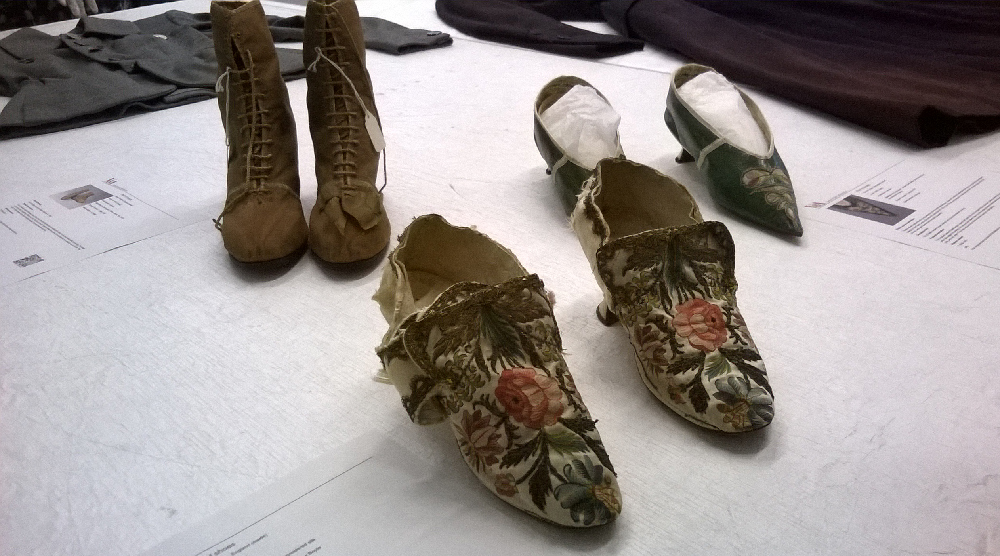
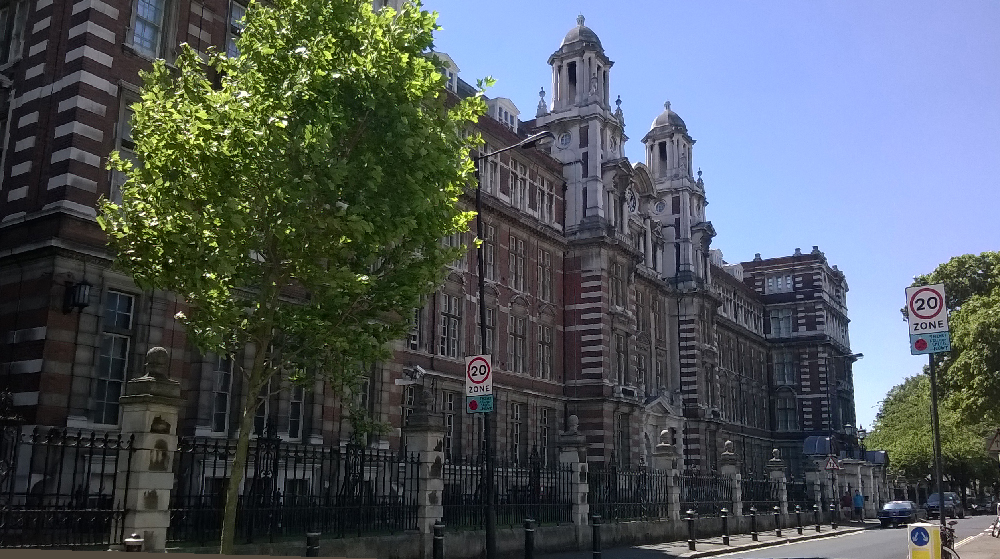
The textile archives of the Victoria & Albert Museum used to be housed in towering shelves behind the scenes in the main building. Then a few years ago they moved their archives and textile conservation centre to Blythe House, this imposing late Victorian building in Olympia, a couple of miles to the west of the museum. This vast building used to be the headquarters of the Post Office Savings Bank but is now shared amongst various London museums, who use it for storage etc. The interior corridors are lined with cream tiles, giving it quite an ‘institutional’ look, and I was amused to see it being used as the set for a psychiatric hospital in a recent t.v. drama series.
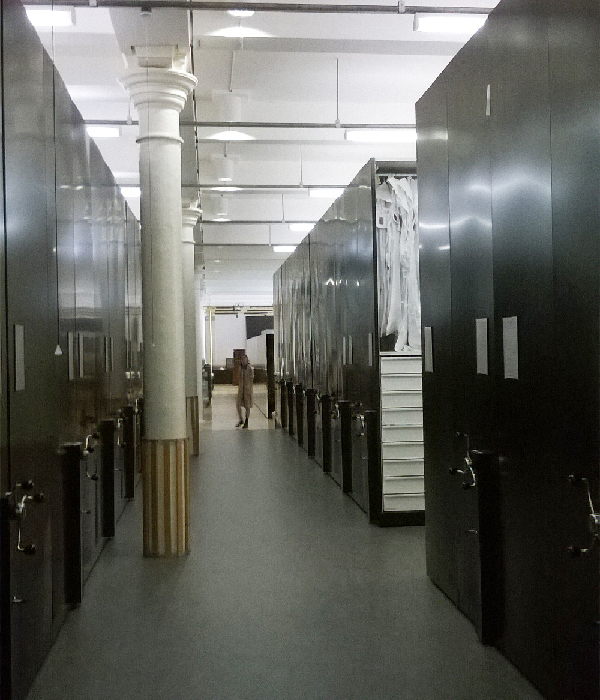
The archives now consist of a long corridor of movable shelving. Some items are hung, wardrobe style, encased in custom-made covers. Our tour leader told us that the covers were made up by volunteers who had previously worked in the garment trade.

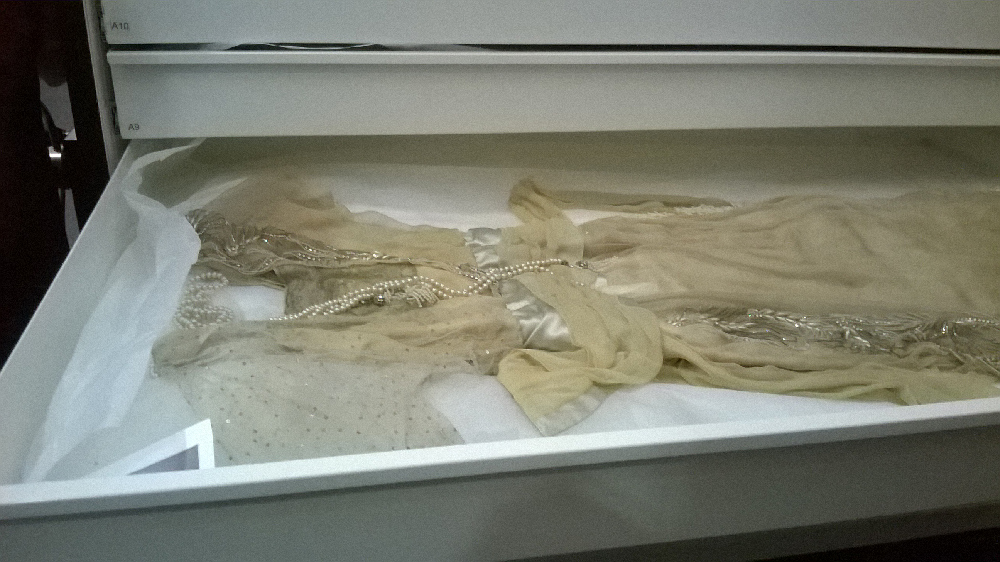
More fragile items, like this Edwardian gown, were stored horizontally in drawers, surrounded by acid-free tissue paper.

At the far end of the corridor, we saw a makeshift photographic studio, where carpets from the collection were being photographed for the museum. Like many major museums, the V & A are gradually creating online reference materials for all the items in their collection. If you visit https://collections.vam.ac.uk/ you will be able to search the collection.
Items from the V & As vast reserves are listed on this website (whether they are on display in the museum currently or not) and many items now have accompanying photographs. I asked the photographer if they had any plans to photograph more lace, but he said that at present they were focusing on the carpets and he didn’t know what would come next.
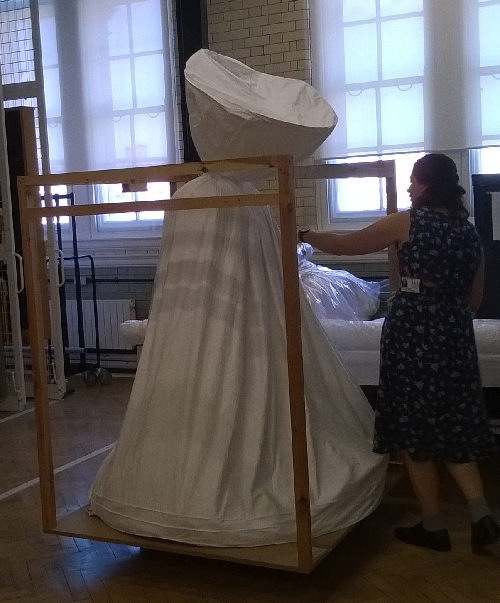
Some ball gowns were stored on mannequins, under these covers. The guide said that this old building still had lots of old toilet cubicles that were no longer in use and so these gowns got a cubicle each!

Some impressive tapestries.
I went on one of the regular public tours, which are held on Fridays (except in August, when the centre is closed). Do book ahead as they keep the groups quite small.
Near the entrance were a group of costumes from different eras which were either about to be lent elsewhere, or had just returned and were waiting to be put back into storage. Many items from the extensive textile collections are requested for exhibitions worldwide.

This exquisite 18th century embroidered mantua was certainly one of the highlights of the tour for me. The pannier skirts were so wide that doorways had to be negotiated sideways if you were wearing one. Some houses actually widened their doorways to allow them access. Lovely, but completely ridiculous!
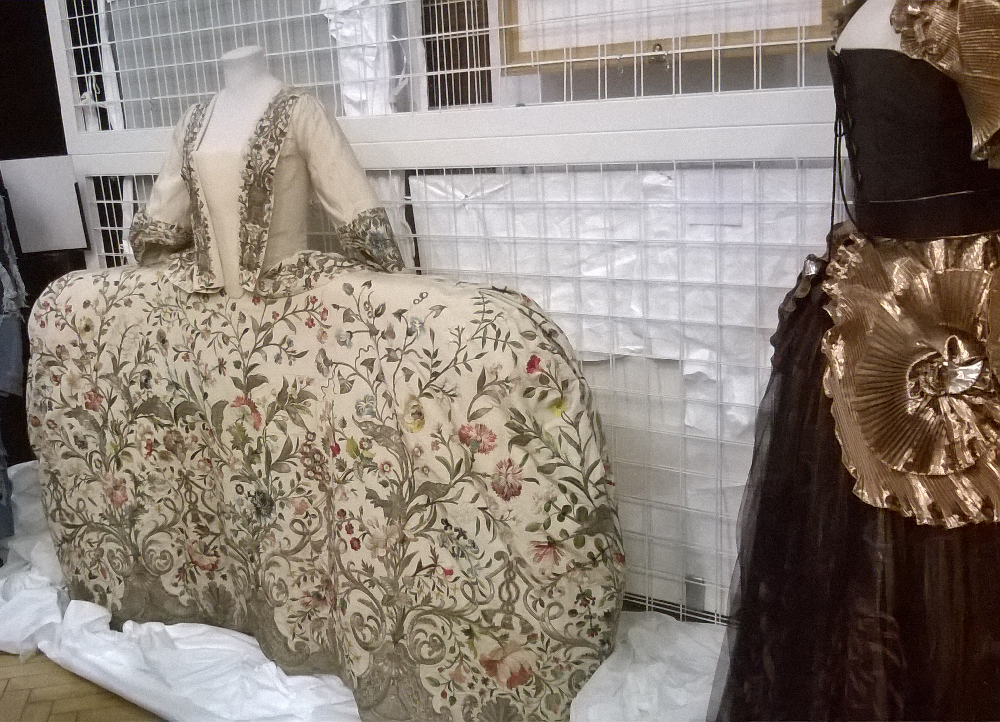

At the other end of the corridor were several areas where items were laid out for inspection by people who had requested them. Anyone can write to them and request to see items that are in the V & A collection, but are not on display in the museum. Our guide emphasised that you do not have to be an academic, or have some special reason for seeing items. Anyone can make a request. I asked how many items you can see on one visit and she told me that the maximum would be about 6 items. You do have to make the request about 2 weeks in advance of your visit.
When you go on one of these guided tours it is pot-luck as to which items will be on show!
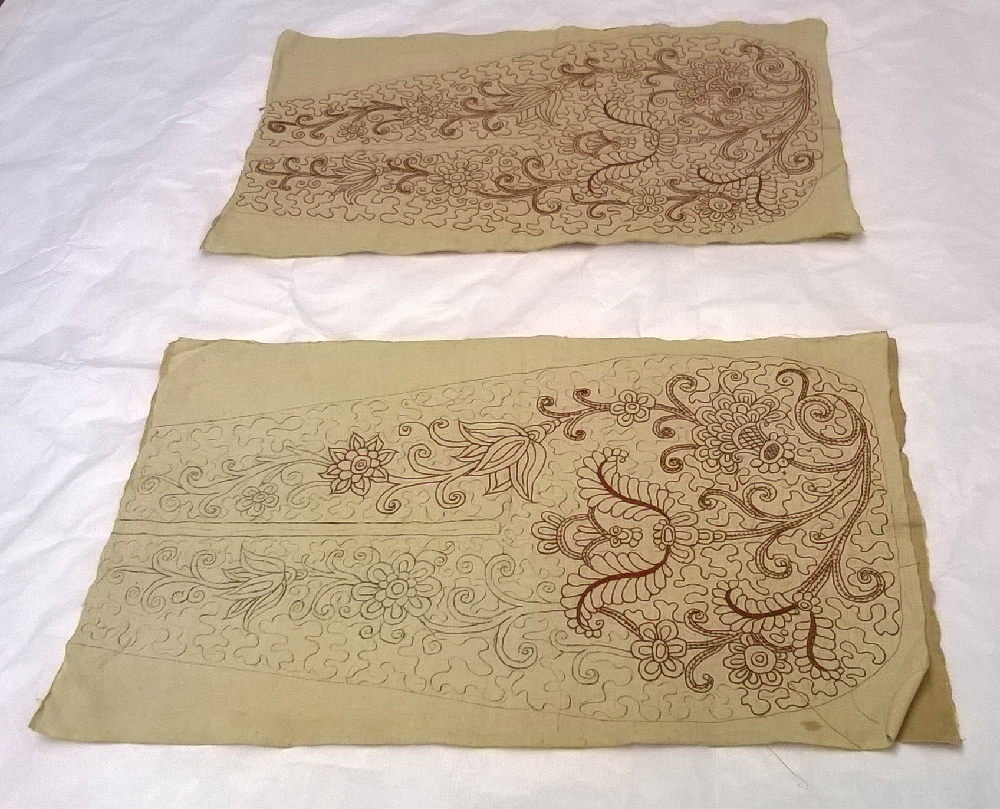
These are patterns for 2 blackwork pockets, dating from around 1720. Pockets on dresses used to be separate bags that were tied to the waist with strings and were accessed through a gap in the overskirt. Pickpockets often cut the strings and stole the pockets. Blackwork was a type of silk embroidery on linen, particularly popular in the late 16th and early 17th centuries, but continuing to be made later, as you can see here. Although it is most commonly made with black thread, other colours were also found, such as this red.

You were not allowed to touch the items. Museum staff, wearing white gloves, would turn items over so the workmanship can be seen, as they have done here with this French embroidered dress. Details of each items were placed on the table.
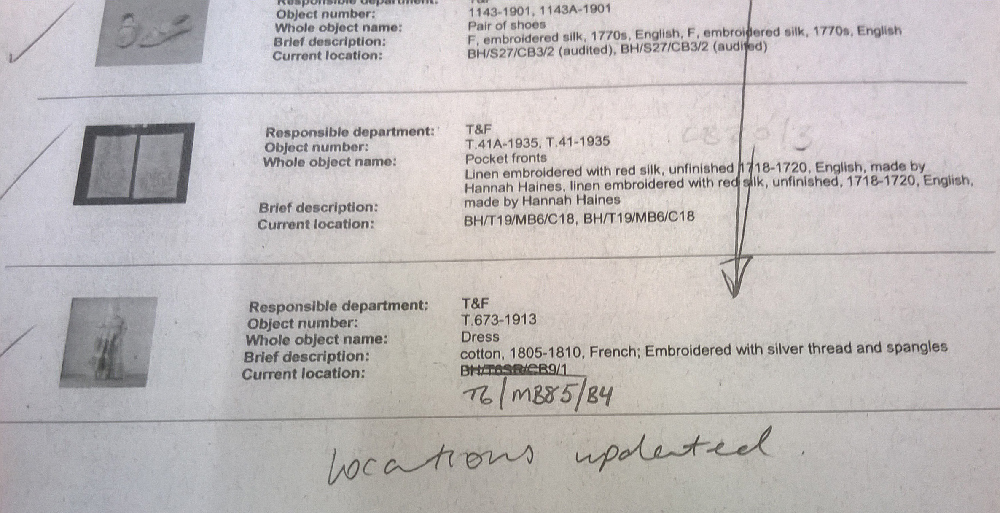
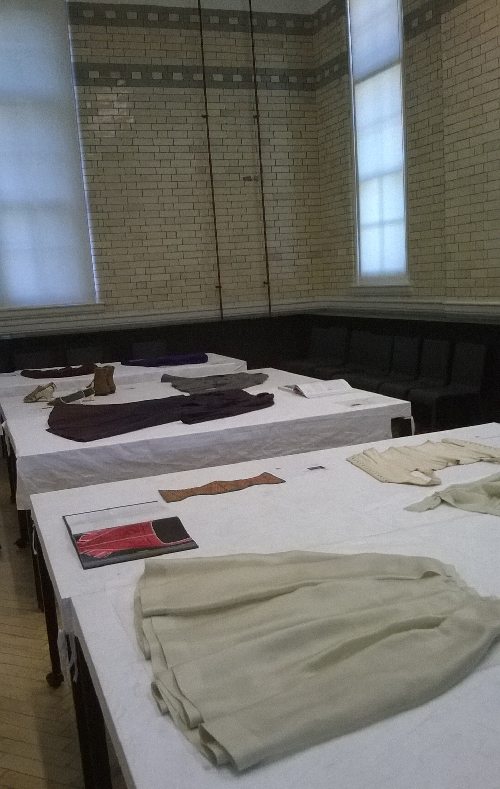
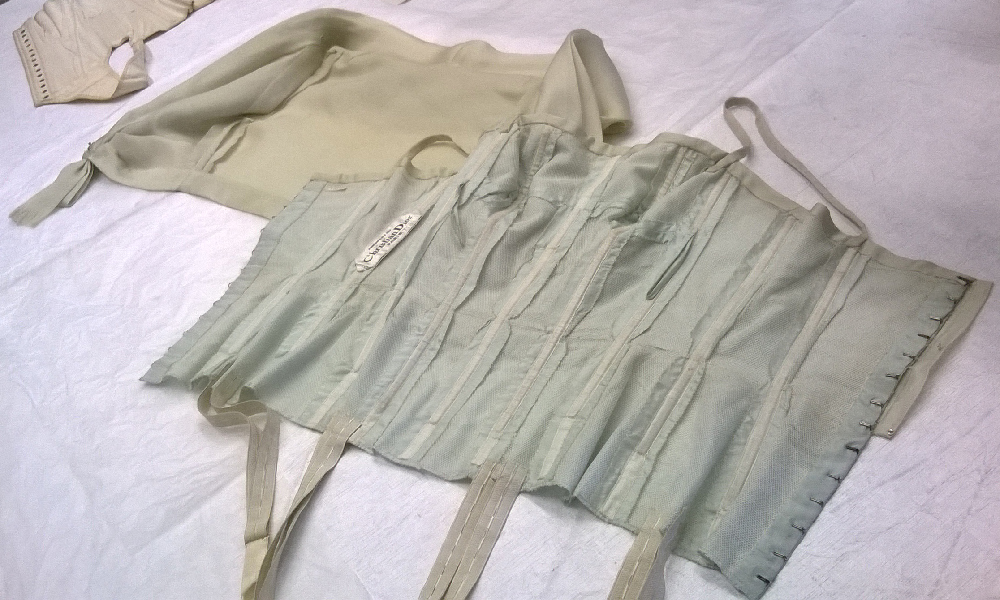
This fine Christian Dior top had been turned inside out so that the fine details of its construction could be seen.

I adored these beautiful embroidered silk shoes. Skirts during this period were just short enough that shoes could be glimpsed. Patterns often mimicked woven silk designs. There is also a pair in the V & A that is supposed to resemble the pattern of Brussels lace, but I am not sure that I quite see the effect. Have a look –
http://collections.vam.ac.uk/item/O74829/pair-of-shoes-unknown/
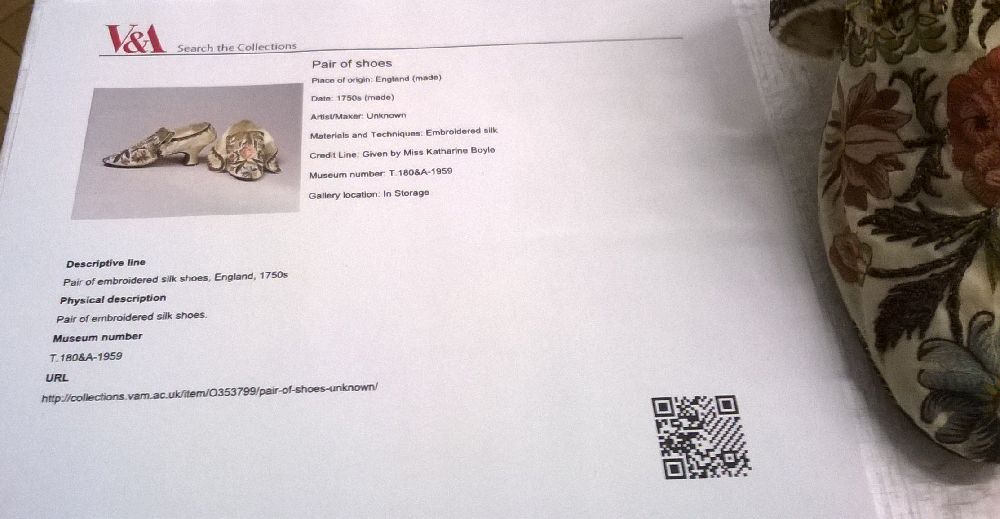
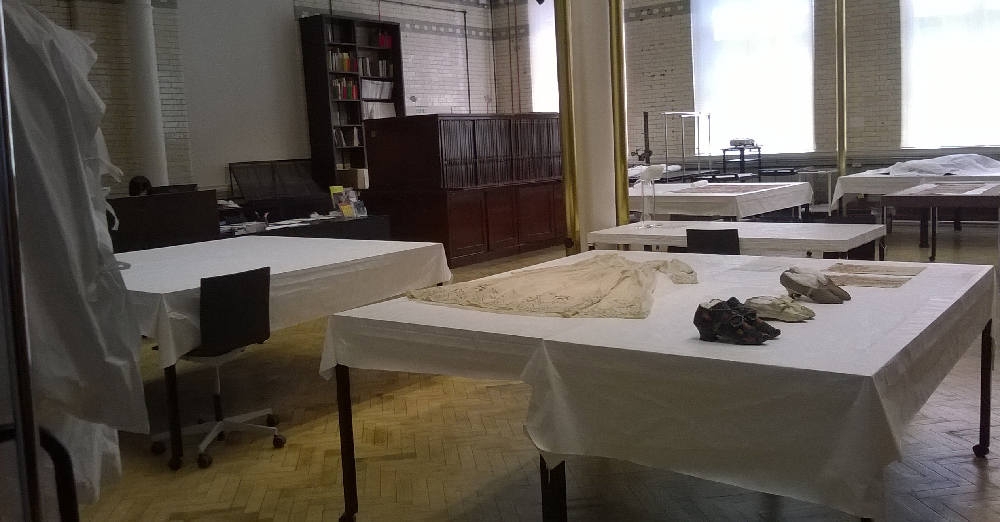
The dark wood cupboards used to be displayed in the museum, so that visitors could pull them open and view all sorts of textiles. There were rows of these cupboards. I miss them. When they were removed the museum decided to keep this one and keep it at the Clothworkers Centre.

A old panel of FrenchToile de Jouy on display.
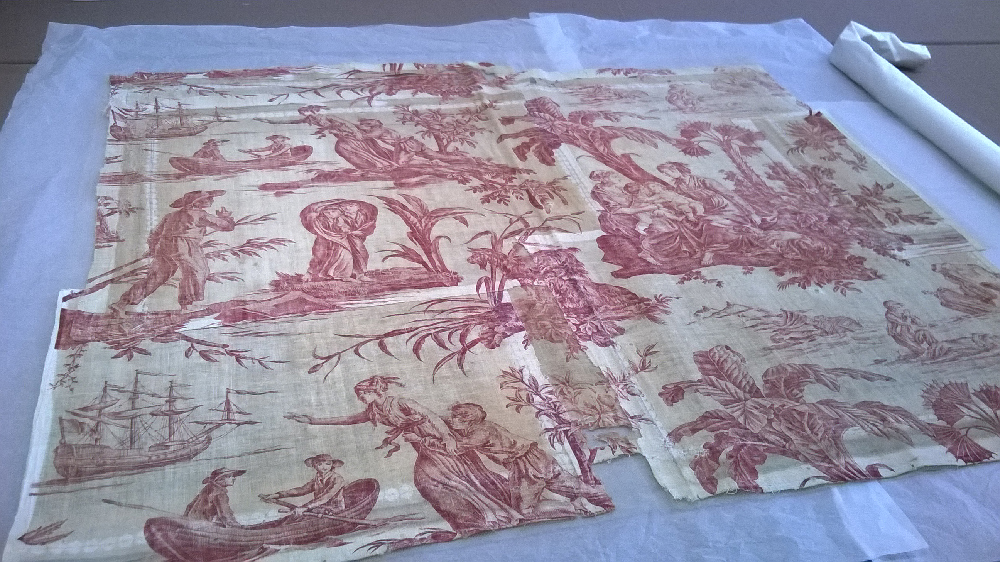

In one of these pull-out cupboards was displayed this charming piece of Spitalfields silk. The Spitalfields weavers worked to detailed patterns, which often had written instructions, listing the names of designers, weavers and merchants, and with exact dates. So different from lace, where the designers and makers and usually unknown. Due to the better documentary evidence for silk weaving, lace from this period is often dated by looking for similarities in contemporary silk designs, as each technique borrowed inspiration from the other in terms of design.

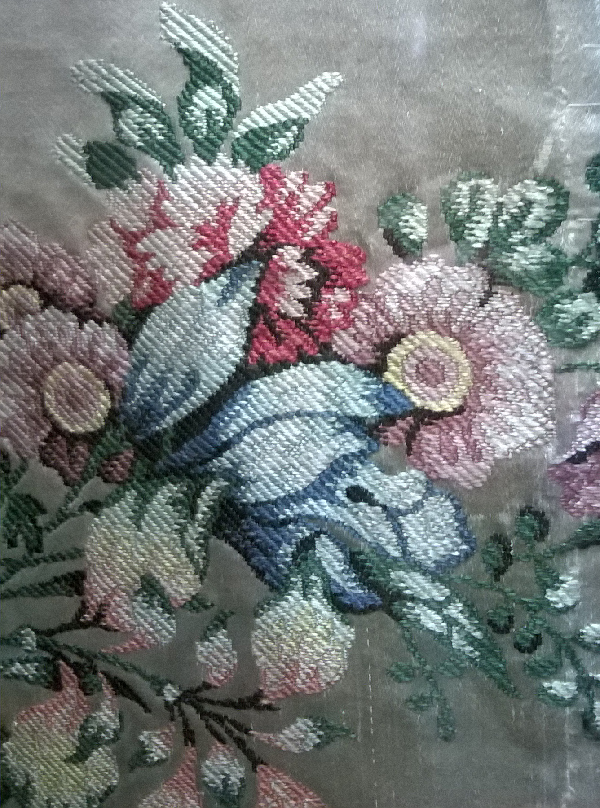
Here is the link if you wish to pay them a visit.